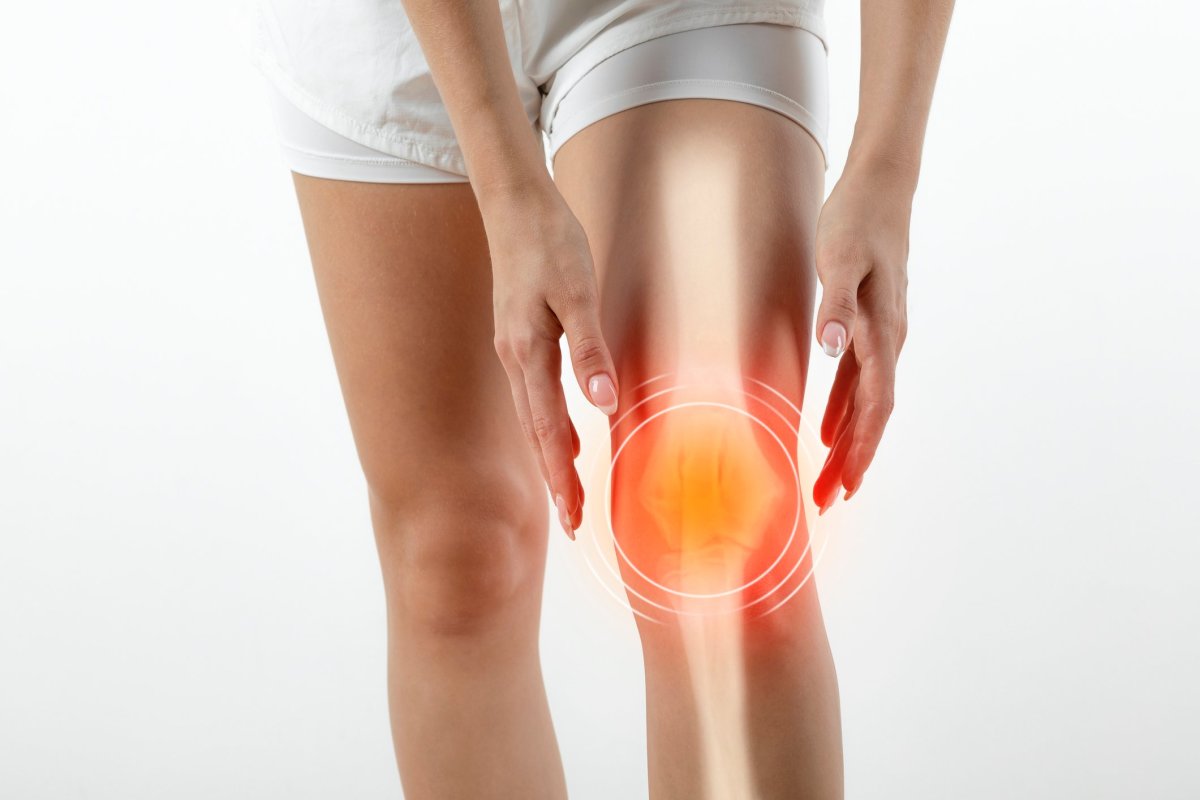Introduction
Knee pain is widespread in our day-to-day life due to many knee injuries and health problems.
Pain on the interior side of the knee is known as MEDIAL KNEE PAIN. It mainly occurs due to the worsening of cartilage with time.
Inner knee pain includes symptoms like pain on the inner side of the knee, movement restriction, and sharp pain.
The prevalence of knee pain is very high because of its complex structure and it carries our body weight as we walk.
Pain on the inside of our knee
Inner knee pain is sometimes severe and indicates that it is probably due to knee problems or injuries.
The pain in the inner part of the knee is known as the medial or medial compartment. The medial compartment comprises the inner half of the knee i.e. the portion of your knee closest to the other knee.
The pain on the inner side of the knee can occur at once or slowly develops with time.
You may feel inner knee pain while bending the knee, playing sports, climbing stairs, a sore knee inside, or any sort of trauma to your knee.
The pain usually occurs in the knee joint because of its complex structure.
The knee joint comprises-
- Bones
- Ligaments
- A capsule
- Synovial fluid
- Muscles
- Menisci
To understand it in a better way, let us look into these parts-
Bones- The knee joint is the joint where two bones- thigh bone and leg bone meet.

Ligaments- The strap-like connective tissue which connects the two bones. Its primary function is to prevent abnormal movement of the knee.
There are four ligaments in the knee-two side and two middle ligaments-
- Lateral Collateral Ligament (LCL)- outer side of the knee
- Medial Collateral Ligament (MCL)- inner side of the knee
- Anterior Cruciate Ligament (ACL) -middle of the knee
- Posterior Cruciate Ligament (PCL)-middle of the knee.

A Capsule- A sheet of cloth-like tissue that covers an organ is known as a capsule.
In the knee joint, a knee capsule encloses the connecting ends of two bones i.e. thigh bone and leg bone.
Its main function is to provide stability to the knee joint.
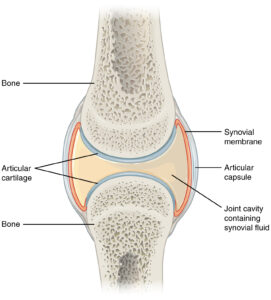
Synovial fluid- It is a thick lubricating liquid in the knee joint. It provides lubrication inside the joint and helps in a smooth movement.
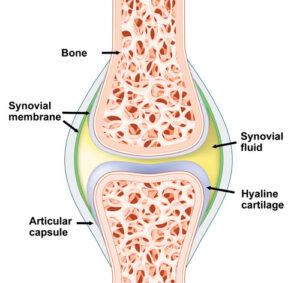
Muscles- The muscles of the knee joint provide stability to the knee.
They are of two types-
- QUADRICEPS– Muscles in front of the thigh
- HAMSTRINGS– Muscles at the back
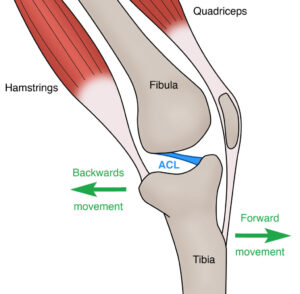
Menisci- Menisci are cartilage that is half-moon shaped, due to its shape, popularly known as Semilunar cartilage.
Its function is to provide stability to the knee and act as a shock absorber.
They are of two types-
- Lateral meniscus
- Medial meniscus
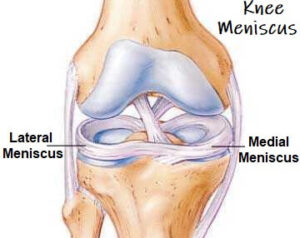
Causes Of Inner Knee Pain
- There are various causes of medial (inner) knee pain like a sports injury, increased physical activity, aging, muscle weakness, or traumatic event.
- In children, different causes of knee pain include- Osgood Schlatter Disease, Patellar Subluxation and Patellar Tendonitis.
Osgood Schlatter Disease- It is an inflammatory disease in growing children that causes soreness on the inside of the knee.
It is characterized by a bump lying at the tibial tuberosity located just below the patella (knee cap).
In this area, the patellar tendon (ligament) attaches to the bone tibia.
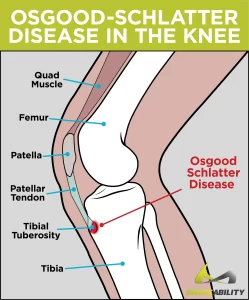
Patellar Subluxation- In this, there is dislocation of the patella (knee cap) partially resulting in instability.
In this, the bone moves outside the body otherwise, it lies within the groove in the femur bone.
It is mainly caused in children with abnormal knee structure or due to sudden jerks or dropping onto the knee while playing a game like a football.
Patellar Tendonitis- In this, swelling occurs in the patellar tendon that connects the patella to the tibia.
It affects children involved in activities like jumping, cycling, running, walking, etc
It is also known as JUMPER’s KNEE as it works with muscles involved in jumping, kicking, and running. It is among children playing games that require jumping like- basketball and volleyball.
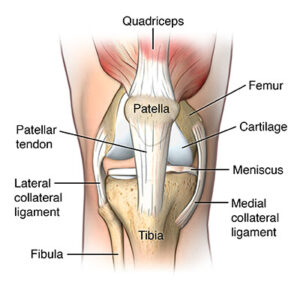
- In Adults, the various causes of knee pain include health conditions such as knee Osteoarthritis, knee Rheumatoid Arthritis, MCL Tear, Medial Meniscus Tear,Pes Anserine Bursitis and Medial Plica Syndrome.
1. Knee Osteoarthritis- It occurs when the cartilage of our knee joint gets damaged. Due to this, bones rub together and lead to pain, swelling, and redness of the knee.
This cannot be cured but with treatment, you can get relief. In severe cases, you can opt for surgery.
2. Knee Rheumatoid Arthritis- It is a long-term, inflammatory, auto-immune disease in which our body’s tissue affects the knee joint.
The immune system attacks the synovial membrane that covers the knee joint and leads to swelling of the membrane.
In this, the pain is severe after the period of rest during the morning but subsides during the daytime.
3. MCL (Medial Collateral ligament) Tear- It is one of the causes of medial knee pain. In this, damage occurs to the medial collateral ligament that lies on the inner side of the knee. The ligament can be torn out into some fibers partially or into two pieces completely.
It is often seen among people who play sports like – basketball, volleyball, skiing, and football.
Its main function is to provide stability and strength to the knee joint.
SYMPTOMS INCLUDE-
- Pain
- Swelling
- Stiffness
- Tenderness
- Popping Sound
- Knee locking
- Instability of knee
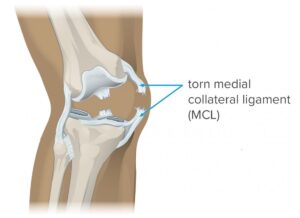
4. Medial Meniscus Tear- In this, the injury occurs in the cartilage of the inner knee known as the meniscus.
Medial Meniscus injury can occur due to activities that require rotating and twisting your knee forcibly.
Symptoms include-
- Knee bruising
- Knee swelling
- Instability of knee
- Popping sound at the time of injury
- Knee locking
- Difficulty in bending
- Difficulty in straightening

5. Pes Anserine Bursitis- Bursitis is the swelling of the bursa (small fluid sac) that reduces friction and lies on the inner side of the knee.
The three tendons – SGT (Sartorius, Gracilis, Semitendinosus) attach to the shin bone over this bursa and constitute Pes anserinus.
In this condition, if the bursae become irritated, they can produce excess fluid leading to swelling and tenderness.
The pain can worsen in swimmers, middle-aged overweight women, and runners.

6. Medial Plica Syndrome- It is a swelling of a fold of the synovial membrane (plica) that lies on the medial side of the knee.
The pain associated with this worsens with climbing stairs, squatting, and bending the knee.
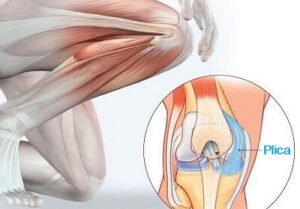
Exercises for inner knee pain
Inner knee pain refers to pain in the inner side of the knee.there can be different causes of inner knee pain like knee injury,arthritis,surgeries etc.
The best way to deal with knee problems is exercise as it helps in reducing pain and strengthening the knee.
Some of the exercises for inner pain are-
-
HAMSTRING STRETCH-
- Lie down on the ground with your back flat,both knees bent and stretched legs.
- Around the arch of the left foot,place the center of the yoga strap.
- Pull on the strap slowly to lift your leg straight upward while keeping your knee straight.
- Stretch is felt at the behind your knee while moving your leg up.
- Hold for more than 30 seconds and then relax.
- Repeat two to three sets on each leg.
-
BUTTERFLY STRETCH
1.Sit down on the floor while bending both of your knees.
- Bring both of your feet together.
- You will feel stretch in the inner thigh.
- Hold this posture for more than 60 seconds and then relax.
- Repeat this for two to three times.
-
HEEL AND CALF STRETCH
- Stand facing the wall and keep your both hands on the wall.
- Place the leg you want to stretch a step behind the other leg.
- Feel the stretch in your back leg.
- Hold it for 30 seconds.
- Repeat this stretch for both legs at least two times.
-
QUADRICEP STRETCH
- Just stand adjacent to the wall with your knees together.
- For maintaining balance you can hold a chair or the wall.
- Hold your right foot with your right hand and pull it towards your butt.
- Feel the stretch at quadricep muscle in front of your thigh.
- Hold it for 30 seconds.
- Repeat this with both legs changing from left leg to right leg.
-
CALF RAISES
- Stand next to the wall with your feet shoulder width apart.
- Raise both of your heels so that you just lie on the balls of your feet.
3. Lower your heels slowly while returning to the starting position.
- Repeat this exercise ten times with 2-3 sets.
Q: Why does the inside of my knee hurt?
A: Inner knee pain can be due to different conditions such as :
Damage of cartilage,injuries of ligament,osteoarthritis and rheumatoid arthritis.
These conditions mainly occur due to aging, sports injuries or excess strain on the knee.
